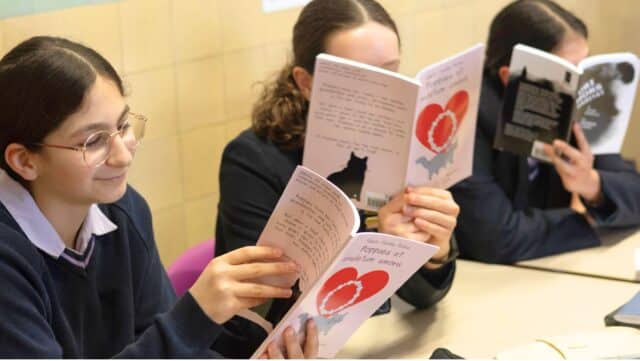Miss Cooper has recently self-published her fifth Latin novella, which are all centred around a family of cats living in Ancient Rome.
The classics department has started to incorporate Latin novellas into the year 9 curriculum both from Miss Cooper and other authors.
We recently caught up with Miss Cooper to hear more about her inspiration behind her Latin Novellas and the importance of incorporating them into the Year 9 curriculum.
What inspired you to write Latin novellas?
My novellas are inspired by two of my favourite things: the ancient world, and cats.
The latest novella, “Poppaea et bulla amissa” is about a young cat who finds a lost amulet in the street and tries to return it to its owner, and gets caught in a mysterious plot.
How do you believe incorporating these novellas into the Year 9 curriculum enhances students’ understanding and enjoyment of Latin?
Novellas are incorporated into the Year 9 curriculum through short 10-minute periods of reading at the start of each lesson.
By reading the novellas at their own pace and choosing which of them they want to read, students can tailor their education and increase their exposure to the Latin language.
Studies have shown that reading in another language for enjoyment can increase language acquisition.
As a Latin teacher, what do you hope students will take away from reading these novellas
Students have said that the novellas are fun to read and very interesting and that they encourage them to read more in Latin. They enjoy the characters and the helpful images on each page.













